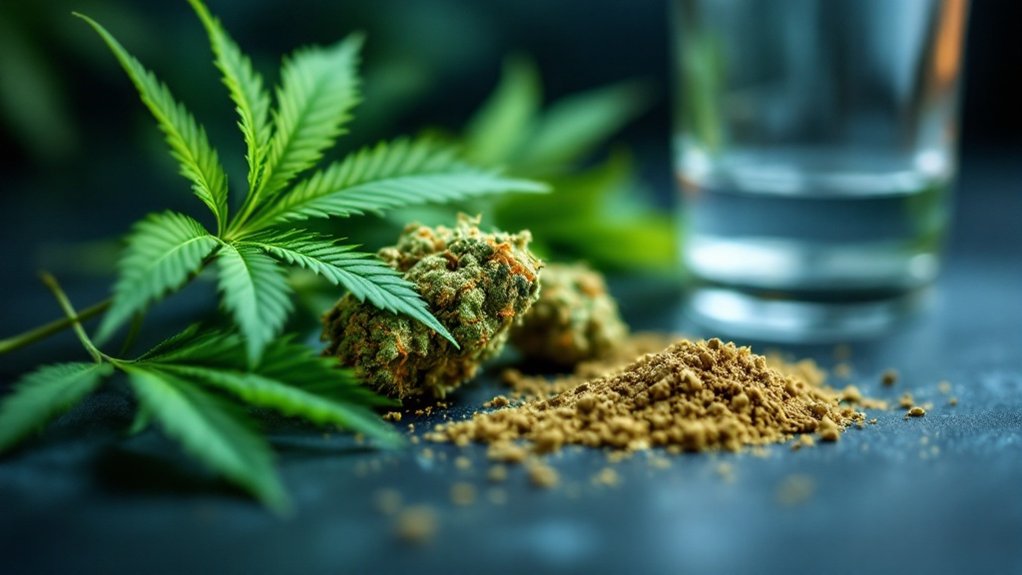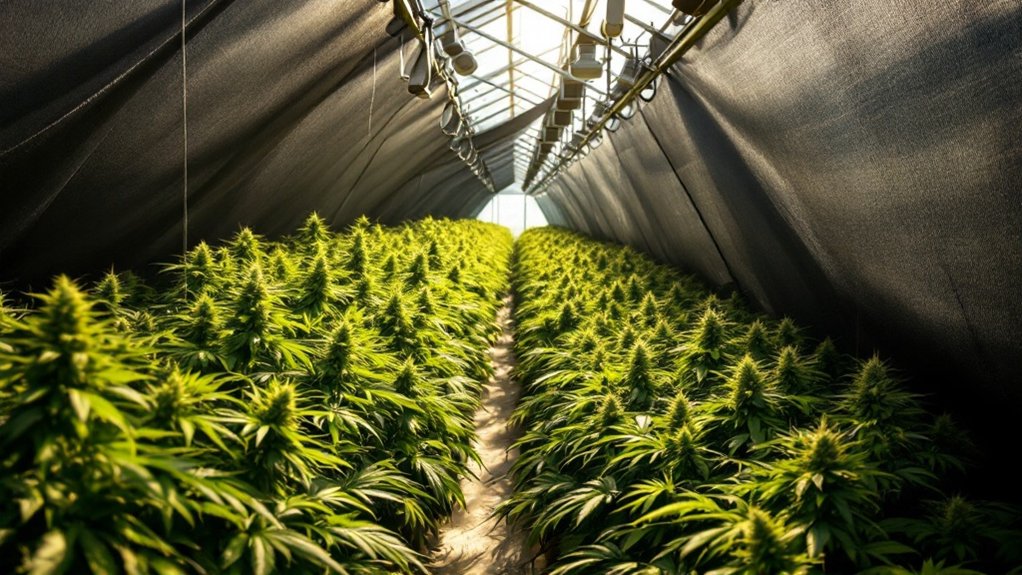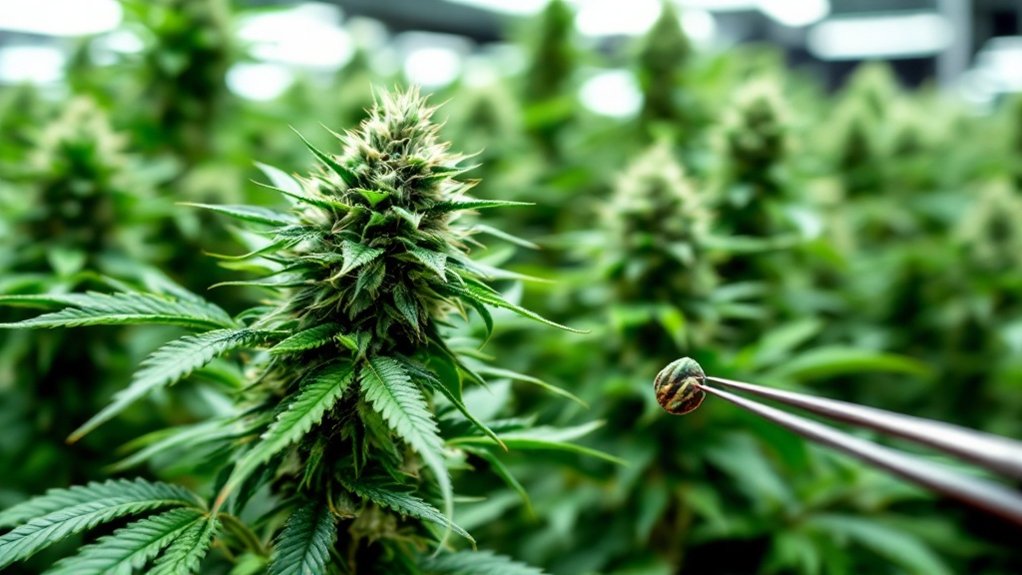Greening out occurs when excessive cannabis consumption overwhelms the body with THC, triggering a range of uncomfortable symptoms. Users typically experience nausea, dizziness, sweating, and tachycardia alongside psychological effects like anxiety, paranoia, and disorientation. This reaction stems from the interaction between high THC levels and the body’s endocannabinoid system. Recovery usually takes several hours as the body metabolizes the cannabinoids. Understanding dosage limits provides the key to avoiding this distressing experience.

Cannabis, with its diverse array of effects on the human body, can occasionally lead to a phenomenon known as “greening out” when consumed in excessive amounts. This physiological and psychological response represents the body’s reaction to higher doses of THC than it can comfortably process. The experience typically manifests through a combination of distinct symptoms that affect multiple bodily systems simultaneously, often causing significant discomfort for users caught unprepared by their intensity.
Physical manifestations constitute the most immediately recognizable aspects of greening out. Nausea and vomiting frequently mark the onset, accompanied by pronounced dizziness and lightheadedness resulting from cannabis-induced blood pressure fluctuations. Individuals experiencing these symptoms commonly display pale skin and excessive sweating as their autonomic nervous system responds to the overwhelming cannabinoid presence. Motor function becomes compromised, with many reporting loss of coordination and a distinct heaviness in their extremities that impairs mobility. Muscle twitches and trembling, particularly in the legs, may become evident as the body struggles to maintain normal function.
The psychological dimension of greening out can prove particularly distressing. Pre-existing anxiety may intensify dramatically, often accompanied by paranoid thinking patterns that further exacerbate the user’s discomfort. Confusion and disorientation affect cognitive processing, while mild hallucinations may occur with consumption of high-THC products. These altered perceptions, combined with heightened sensory inputs, frequently overwhelm the individual’s ability to process environmental stimuli, creating a cascade of increasingly uncomfortable experiences. Many individuals report experiencing a severely distorted sense of time during a greening out episode, with minutes feeling like hours.
Cardiovascular responses play a significant role in the greening out phenomenon. Tachycardia, or increased heart rate, represents a common physiological reaction that users often find alarming. This acceleration, coupled with lowered blood pressure and vasodilation, contributes to feelings of faintness or weakness. Some individuals report chest discomfort or palpitations that, while rarely dangerous in healthy users, can substantially increase anxiety during the episode.
Recovery times vary considerably based on individual factors including body composition, hydration levels, and cannabis tolerance. Most symptoms resolve within 24 hours, with experienced users typically recovering more rapidly than novices. Risk factors that increase susceptibility include inexperience with cannabis, consumption of high-potency products, and simultaneous use of alcohol or other substances. Distinctive features of greening out include slurred speech, bloodshot eyes with dilated pupils, and rapid symptom onset following consumption—distinguishing it from chronic conditions like Cannabis Hyperemesis Syndrome.
Frequently Asked Questions
Does Greening Out Cause Long-Term Damage?
Greening out from cannabis typically does not cause long-term damage in most individuals.
While temporary symptoms like nausea, anxiety, and disorientation can be distressing, research indicates these effects generally subside within 24 hours.
Respiratory issues may develop from chronic smoking, but isolated greening out episodes have not been linked to permanent health consequences.
The duration and severity of symptoms vary based on factors including body weight, hydration levels, and the potency of the cannabis consumed.
Can You Prevent Greening Out?
Preventing greening out requires intentional harm reduction strategies. Consumers can minimize risk by starting with low-THC products and gradually increasing dosage while monitoring their body’s response.
Product label education, responsible consumption habits such as avoiding simultaneous alcohol use, and maintaining hydration are effective preventative measures.
Creating a comfortable environment, keeping CBD products available as a THC antagonist, and learning grounding techniques provide additional protection.
Taking breaks between sessions allows the body to properly metabolize cannabinoids and develop appropriate tolerance levels.
How Long Does Greening Out Typically Last?
Greening out typically persists for a few minutes to several hours, with symptoms generally resolving within 24 hours.
The duration varies based on several factors, including THC concentration, individual tolerance, consumption method, and physiological state.
Physical symptoms like dizziness and nausea often subside first, while psychological effects such as anxiety may linger longer.
Recovery time is influenced by hydration levels, food consumption, and whether the individual rests in a calm environment during the experience.
Are Some People More Susceptible to Greening Out?
Several factors influence susceptibility to greening out. Individuals with low tolerance, particularly new users or those returning after extended breaks, face heightened risk.
High-THC products, especially edibles with delayed onset effects, greatly increase vulnerability.
Pre-existing psychological conditions like anxiety can exacerbate symptoms, while physiological factors such as body weight and metabolism affect THC processing.
Mixing cannabis with alcohol or other substances compounds the risk by amplifying dizziness, confusion, and other adverse reactions.
Can CBD Help Counteract a Green Out?
Research suggests CBD may help counteract greening out symptoms due to its anxiolytic properties.
CBD interacts with the endocannabinoid system differently than THC, potentially reducing anxiety, panic, and paranoia associated with cannabis overconsumption.
Studies indicate it might alleviate physical symptoms like nausea, rapid heartbeat, and dizziness.
However, effectiveness depends on factors including dosage, consumption method, and individual physiology.
The relationship between CBD and greening out remains complex and requires further clinical investigation.









